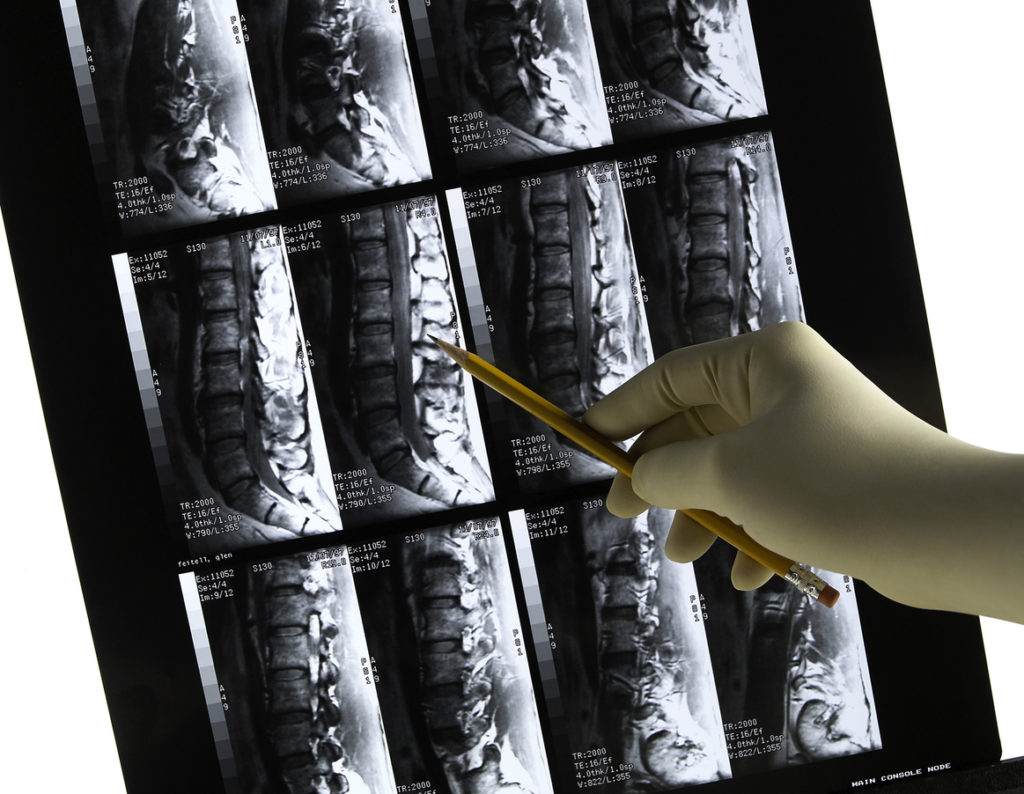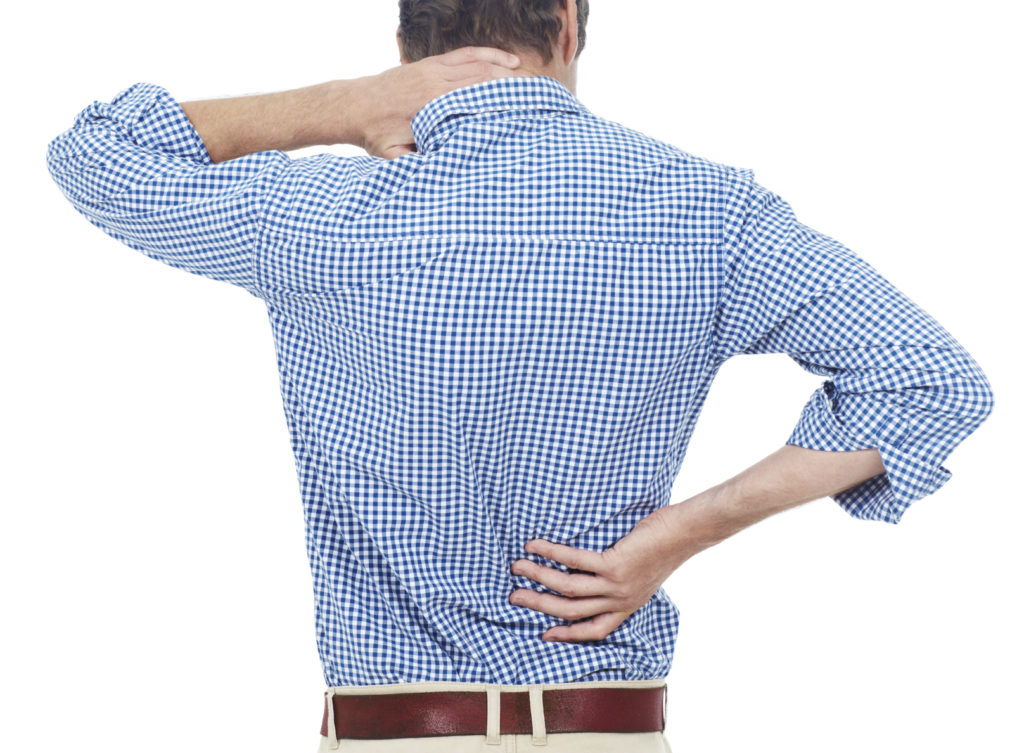7 Ways to Reduce Pain When Sleeping With Sciatica
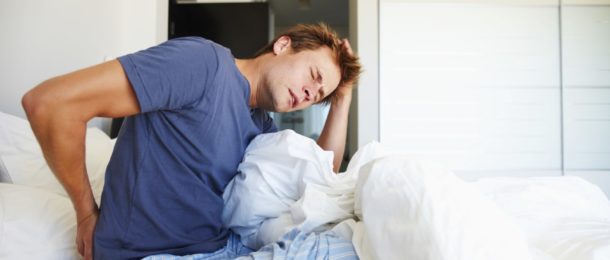
Sleeping with sciatica is no easy feat. There may be lower back pain, numbness, hip pain, tingling, or even throbbing. Sciatica does not rest while you are asleep. However, there are some ways to reduce pain while sleeping.
Sciatica is a word to describe pain that moves along the sciatic nerve, which can become pinched or irritated. If you have sciatica, then you know the pain occurs in many locations, from your back to your buttocks to your legs and feet.
Not only can it cause pain, it can cause weakness, numbness and tingling. Any of these symptoms make it hard to be comfortable, especially when sleeping.
Statistics show that one in three adults say back pain impacts their daily activities, including sleep. This can happen for specific reasons.
Why Is Sciatica Pain Worse at Night?
The nerves involved in causing your sciatica pain are pinched, inflamed or irritated in some way, even when you are trying to sleep.
Lying down puts pressure on your lower back and can compress the sciatic nerve. This can cause pain from dull to excruciating. Your mattress can also contribute to nighttime discomfort.
Because you need rest to heal, sleeping with sciatica is extremely important. Below are tips to help you learn how to sleep properly; even with sciatica.
1. Apply Heat
Heat therapy has been shown to relieve symptoms of lower back pain, such as sciatica. However, many people are not familiar with the proper method for applying heat.
First, make sure the heat you apply is a warm temperature, not hot. If it is too hot, it can cause further irritation. In addition, where you apply the warm pack is important.
You may be feeling pain in your legs or feet, but the origin of the pain is in your lower back. Therefore, apply the warm pack to your lower back where the sciatic nerve is.
Finally, apply heat after you have tried cold packs for a few days. Cold packs decrease inflammation, which can take pressure off the nerve.
2. Hot Bath
Another way to apply heat to the lower back is by taking a warm bath, which can be relaxing to your whole body.
When you are relaxed, endorphins can be released. These are the pain-fighting chemicals in your brain and gut. You can also use essential oils to aid in relaxation.
3. Change Your Mattress and Pillow
When sleeping with sciatica, it may take you a while to find a position in which you feel comfortable enough to rest. Your first thought is that the trouble you are having is related to your sciatica. And you are correct. However, your mattress and pillow are also contributors.
Someone suffering from sciatica should have an orthopedic mattress and pillow. Too many people place mattress and pillow quality at the bottom of their priority list.
But sleep is one of the most important ways to improve sciatica and that can only happen with the right mattress and pillow.
Work with the staff of a mattress store to find the right mattress for the way you sleep.
- If you sleep on your stomach, you will want a firm mattress that aligns your body.
- If you sleep on your side, you will want a softer mattress that provides support in critical areas such as your hips.
- If you sleep on your back, you will benefit from a mattress that gives you support throughout your whole body.
Many with sciatica have found that body pillows make sleeping with sciatica much easier. In addition, placing a pillow between your knees to keep your body aligned has been found to be very beneficial.
4. Stretch
As you lay down to sleep, there are simple stretches you can do to relieve pressure on the lower back and minimize your symptoms.
Lying on your back, raise your knees to your chest to stretch the lower back.
You may even want to consult with a fitness expert to set up a nighttime stretching routine that helps with your sciatica.
5. Medicines
When sleeping with sciatica, it is okay to occasionally take medicine that helps you find rest. There are over-the-counter medications that are not addictive, such as acetaminophen, that can decrease inflammation in your lower back.
You may also want to work with a pain management specialist to discover other medicines, like muscle relaxants.
Your doctor may suggest other treatments like steroidal injections, physical therapy and infusion techniques in addition to medicine. Massage is another common recommendation from pain management specialists.
6. Massages
While deep tissue massages, given by a trained therapist, is a good idea, it may not be something you can do often. The good news is that there are massage techniques you can do at home, before bed, to help you sleep.
Using your knuckles, you can massage your lower back area. You can also use techniques using both your knuckles and your palms, rotating where you put pressure that can alleviate sciatica.
If you are not finding relieve from self-massage, you can buy equipment to help.
Equipment such as tennis balls, spinal rollers, knobbles and the back buddy specifically ease pain in the lower back.
Your pain management specialist can recommend the right equipment to meet your needs. They can also introduce you to a new image-guided pulsed radiofrequency treatment.
7. Radiofrequency Treatment
One of the simplest ways to treat sciatica is with the use of radiofrequency treatments performed by your pain management doctor. It is non-invasive and quick and has a high rate of success among patients.
The procedure includes your doctor inserting a needle into your back. He or she guides the needle to the nerve or damaged area using a fluoroscopic x-ray. Once the needle is in place, your doctor will inject medicine which will alleviate sciatica.
The procedure can take less than ten minutes and can be done on an outpatient basis.
Is Sleeping With Sciatica Possible?
In conclusion, you deserve to get peaceful rest at night, and that includes sleeping with sciatica. Fortunately, there are proven methods you can try to make sleeping with sciatica possible.
Reach out to a pain management specialist and develop your plan of action today.
5 Types of Steroid Injections for Back Pain to Know & What Conditions They Treat

Steroid injections for back pain are great non-invasive techniques to provide back pain relief and let you enjoy life again!
If you are experiencing back pain of any kind, you know how desperate you can feel for relief, even if temporary.
According to the American Chiropractic Association, back pain is the leading cause of disability in America. It is the reason for millions of missed work days by employees in pain.
Back pain can affect anyone from young children to the elderly, it is estimated that nearly 80 percent of Americans will experience back pain at some point.
The causes of back pain can range from infections, sprains and strains, to inflammatory diseases and fibromyalgia.
The good news is that there are treatments for each cause of back pain you may experience.
Types Steroid Injections for Back Pain
A popular treatment today are steroid injections for back pain, which can treat many conditions. Keep reading to find learn about five specific types of steroid injections for back pain.
1. Facet Joint
Facet joints are located on the side of the vertebrae running from the neck and down the spine.
Pain in these joints can be felt in the head, neck, back, arms, hips and even the legs. It’s basically the friction between the bones causing swelling or some other type or irritation.
Pain location will be relative to the specific facet joints with arthritis, inflammation or some other ailment.
Some conditions that can lead to facet joint pain include:
- Osteoarthritis of the spine,
- Degenerative disc disease
- Spinal stenosis
- Any type of trauma that has occurred to the area
With facet joint injections, your doctor will use x-rays and imaging to guide them to the affected joint. They will inject medicine so that you can begin to feel more flexible and have less pain.
The procedure is quick and can be done with a local anesthetic. Many patients report seeing results within two weeks of treatment.
2. Epidural Steroid Injection
You’ve experienced sever pain if you have ever had:
- A herniated disc
- Bone spurs
- Spine ligament issues
- Cysts on your joints
- Misaligned or slipped vertebrae
Fortunately, epidural steroid injections can help relieve this pain. The injection is made into the epidural space that surrounds the spinal sac and offers a cushion to nerves and the spinal cord.
Like facet joint injections, doctors using epidural steroid injections are guided to the right space using x-rays.
Doctors also may use a dye to check and make sure the medicine is going to the right place.
The procedure is done on an outpatient basis and you should be able to return to your regular lifestyle within a day. Post-treatment, within one to three days you can notice improvements.
3. Sacroiliac Joint Injection
Your sacroiliac joint is located in your lower back and buttocks region.
This joint helps absorb shock for the upper body and balances your body so your legs and hips can handle the weight of your upper body while helping you function properly.
If you have pain in this joint, you can feel it in many areas, not just in the joint. You can feel pain in the following areas:
- Down your legs
- Groin
- Hips
- Abdomen
Pain in this joint can appear like sciatica and herniated discs so it is important to get a correct diagnosis.
Once diagnosed, your doctor will treat your pain using a special x-ray called a fluoroscope. With a local anesthetic, your doctor will inject an anti-inflammatory into the joint and source of your pain.
The procedure is done on an outpatient basis and you can begin to feel the positive effects within a few days post-injection.
4. Sympathetic Injection
Sympathetic nerves are a group of nerves on the front side of the spinal column.
They control a lot of body functions, including sweating and blood pressure. They can also cause pain when an area is injured or damaged.
Sometimes, even after you have healed from an injury, the sympathetic nerves can continue to send pain signals to the rest of the body.
Chronic regional pain syndrome and reflex sympathy dystrophy are just a couple of conditions a sympathetic injection can relieve.
To treat this, a sympathetic nerve block can be performed by your doctor to determine the source of your pain. He or she will use a local anesthetic to numb the area of injection.
- You may also be given a small sedative to help you relax. Using a fluoroscopic x-ray machine to help guide the needle to the right injection spot.
- You may notice immediate relief, but some doctors choose to give you multiple treatments over the few months following the initial injection.
5. Lumbar Epidural Injection
The lower back region, or lumbar region, is the specific target for lumbar epidural injections.
These steroid injections for back pain treat the lower back, which can happen due to injury, illness or something you may have been born with or inherited.
Nerves in the lumbar region can send pain signals to your:
- Legs
- Hip
- Feet
- Abdomen
Many associate sciatica with lower back pain, which can happen when the nerves in the lumbar region are inflamed.
Your doctor’s main goal is to treat this inflammation so that you can experience relief from your pain.
Using a fluoroscope, your doctor will inject numbing agents and antiseptics into the affected area, causing inflammation to lessen, and giving you improved functioning.
This procedure is a quick, in-office technique that offers a lengthy amount of relief. Some claim they have relief for up to a year.
Conclusion
In conclusion, there are many positive ways to treat your pain.
The ones listed in this article are non-invasive, non-surgical techniques that have been shown to give successful results for decades.
Whether your pain is in your neck, the middle of your back, or in your lower back, there are treatments available to help you live with the least amount of pain.
Therefore, they can help you get back to enjoying all areas of your life, from family and friend to work and hobbies.
Talk to your doctor today to discover which type of steroid injections for back pain that will work for your back pain.
Is Back Pain Linked to Mental Health Problems In Teens?
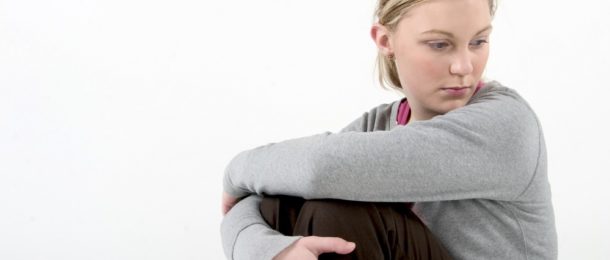
Back pain is an extremely common physical condition for people of all ages; but is this pain connected to mental health problems?
According to the American Chiropractic Association, back pain is the single leading cause of disability. They further state back pain can affect people of all ages, including children and adolescents.
Reports explain back pain in children starts to increase once they begin school. As they grow each year, the number of students with back pain also grows. Unfortunately, not many will seek medical care unless the symptoms become severe.
Risky Behavior Is Growing – Is It Due to Pain?
This pain may be one reason researchers are finding a link between the back pain an adolescent has and risky behaviors they exhibit.
Meaning, adolescents who suffer from back pain are developing negative habits such as smoking cigarettes and drinking alcohol.
Furthermore, these same adolescents were found to have an increase in mental health issues like depression and anxiety.
In research studies, teens with back pain were compared to teens without back pain. It has been found the teens with back pain engaged in risky behaviors and experienced negative mental health.
Before saying yes, back pain is linked to mental health problems in teens, it is important to learn more about back pain, how it is diagnosed, teen mental health and how they may be connected.
Reasons for Back Pain in Teens
It has been reported that by the age of 15, up to 70 percent of children will report some type of back pain.
Many times, we categorize pains in teens as “growing pains”. We dismiss their pains as ordinary and something to be expected as they grow.
However, back pain can be caused by many things, in addition to growing bones.
Sports Injuries
Sports injuries can create strain on a back. Extracurricular activities such as dancing, gymnastics, and athletics can often lead to overuse of muscles in the body, especially the back.
This overuse can make it hard for your teen to function if it is not treated properly. Even a backpack that is too heavy may cause back pain.
Other Reasons
Reasons not related to actions include scoliosis and spondylolysis, or other genetic problems, can lead to back pain in teenagers. These can also be aggravated by injuries or overuse.
More general reasons for back pain include
- bruising
- pulled muscle
- pulled ligaments
- kidney infection
- inflammation
When Should You Seek Medical Attention?
While many teens who experience back pain will recover without the help of a doctor, there are times when it is important to seek medical attention. For instance, if your teen’s back pain appeared suddenly and for no apparent reason.
Other signs you need immediate help include:
- if the pain lasts for more than a few weeks
- whether pain is accompanied by sweats or high fever
- if there has been a recent trauma to the back
- when no relief can be found no matter what you try
- if you see abnormal lumps or growths
- unusual bruising
- if other functions of the body are dysfunctional
Furthermore, if you notice your teen taking part in negative or risky behaviors such as drinking, smoking or using drugs, have a doctor determine the root cause.
What to Expect When Getting a Diagnosis
Your doctor will first complete a full history, psychological and physical exam of your teen to determine the source of his or her pain.
Your doctor will be looking for red flags, reasons for the pain.
Red flags can be
- infections
- abuse of any kind
- self-injurious behaviors
- severe depression
- anxiety
- any other medical or psychological reasons
Your doctor will evaluate psychosocial stressors and if so, will develop proper interventions.
How is Back Pain Linked to Teen Mental Health Problems?
In a study of 200,000 participants, it was found that those who had back pain, also had mental health issues.
This is the largest study connecting back pain and mental health problems, including depression, anxiety, sleep disturbances and even psychosis.
The Connection
In studying adolescents specifically, girls were found to have more psychological issues than males. However, it was noted that pain and mental health problems go hand in hand and should be studied further.
Research is also needed to determine whether pain creates a mental illness or if a mental illness creates pain.
To date, both are found to be true.
For example, some reports show substance abuse and anxiety disorders precede chronic low back pain. On the other hand, depressive disorders can come before or after pain.
Why Is There a Connection?
The connection may be that when your body is in physical distress, as with back pain, you become distressed psychologically. And being mentally distressed can lead to more physical stress.
It is a cycle that must be broken to avoid more severe damage, mentally and physically.
Musculoskeletal pain is on the rise, according to national research organizations. This is pain felt by teens in the bones and muscles and is quite common among teens today.
During their research of over six thousand teenagers, analysts found those who reported pain, also reported missing school, drinking alcohol and smoking cigarettes.
A Cycle
In addition, the more pain experienced, the more the teen participated in negative behaviors. Whether the teen was using substances to help alleviate the pain is unclear, only that they were connected.
The National Pain Report examined teens with psychiatric problems. The researchers found seven out of ten adolescents with mental illness also reported having chronic pain.
This translates to close to 80 percent of teens who reported having anxiety or depression having the highest rates of pain.
Conclusion
Anytime a teen expresses having pain in their back, pay attention.
Ask questions and seek medical help, whether you think it is serious or not.
You may even want to ask your doctor for a referral. There are specialists in the field of pain management that can inform you of all treatment options.
The Relationship Between Chronic Back Pain and Restless Legs
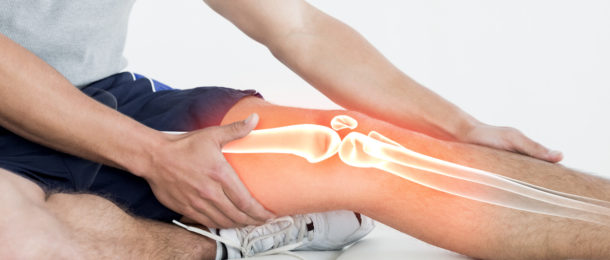
Several studies have been able to show a link between chronic back pain and restless legs. What is known for sure is that both restless leg syndrome and back pain make it hard to function properly in your daily lifestyle.
Because both make it hard to obtain a good night’s sleep, those in the medical profession agree it is an area that needs to be researched further. Lack of good sleep can reduce a person’s quality of life and can lead to negative symptoms both mentally and physically.
One of the first steps in learning about restless leg syndrome and its connection to chronic back pain is to gain a good understanding of each.
What is Restless Leg Syndrome?
Restless Leg Syndrome (RLS) is diagnosed by a medical doctor or specialist. Through interviewing you and listening to your complaints, doctors will look for specific symptoms related to restless leg syndrome.
One symptom is the uncontrollable need to move, along with uncomfortable or painful feelings in your legs. Another symptom is that you feel this way while at rest. RLS lasts more than five to ten minutes and can usually be relieved by getting up and moving around.
There is no lab work to help diagnose RLS. Therefore, what you report to your doctor is crucial.
Why Restless Leg Syndrome is Hard to Diagnose
Because there are no tests established, RLS is sometimes confused with other ailments with similar symptoms. An example is sciatica, which has symptoms of pain in the lower back, the buttocks, legs and even feet and toes.
A recent study conducted on 46,000 people who report having restless leg syndrome found there are common gene mutations among them. These researchers claim RLS begins in the embryonic development of the nervous system. However, it does not show up, or it is not triggered, until adulthood.
Some researchers feel RLS is a result of another condition, while others feel they have a common cause or overlap in some way. Examples include neurological diseases such as: dopamine abnormalities in the brain, neuropathy, iron metabolism abnormalities, cortisol deficiencies, and kidney problems.
One thing that has been recognized is there is a direct connection to chronic back pain and RLS.
What is Chronic Back Pain?
Back pain is just that, pain in any area of your back. It can include pain in your lower back, spine, nerves or any other area connected to the back. What makes it chronic is that you have had this pain for longer than three months.
There are two other types of back pain: acute and neuropathic. Acute pain lasts for less than three months and is usually related to an injury or is situational and temporary. For example, labor pains.
Neuropathic pain is a version of chronic pain. Your original reason for the pain has disappeared, yet you still feel pain. This is likely due to nerve damage. Your nerves are still sending pain signals to your brain even though there is no observable injury or pain site.
Chronic back pain can be caused by many things, from injuries to deterioration of bones. Some of the more common causes include: arthritis of the spine, spinal stenosis, herniated or bulging discs, or muscle soreness.
Unfortunately, there are also cases in which people have back pain, but the source of the pain cannot be identified.
This does not mean you cannot find relief, however. In fact, there are many treatments available to ease symptoms of both chronic back pain and restless leg syndrome.
Treatments for Restless Legs and Chronic Back Pain
Both restless leg syndrome and chronic back pain can be treated with medication. However, this is rarely the first line of treatment by pain management specialists. Instead, a first action would be to rule out other potential causes for your RLS symptoms.
Another factor to review is your habits. Are you drinking too much caffeine, are you participating in sports that can further an injury, or are you using alcohol or drugs that have side effects?
Doctors will also measure the vitamin levels in your system. Being malnourished can contribute to health concerns such as RLS and pain.
Are you sedentary or getting a proper amount of exercise? Much research has shown the right exercise can ease symptoms of RLS. And stretching or yoga can ease symptoms of pain, as well as massage and acupuncture.
Physical therapy and lifestyle changes, including what you eat, can also help in treating your pain.
Once these steps have been taken, prescription medication or some form of injection or infusion, may be necessary. If so, you and your doctor will create an effective treatment plan to help alleviate your pain.
Finding Help for Chronic Back Pain and Restless Legs
First, know that you are not alone in your search for pain relief. According to the National Health Survey, over 20 million people in America are suffering from chronic pain, with many of them also struggling with RLS.
There is help there. But your family doctor is not the right medical professional to treat your chronic back pain symptoms or RLS symptoms. The only thing you need from your primary care physician is a referral to the best pain management clinic.
You want to work with a specialist in pain management. They have more experience and more access to pain management treatments.
Pain management specialists understand the wide range of pain disorders. They have extra training in the areas of diagnosis and individualized treatment of both RLS and chronic back pain. They recognize the connection between the two.
When searching for you pain management specialist, check for their additional training, such as a fellowship, they completed successfully. This extra training allows doctors to become certified in pain management.
Their certifications should come from one of four sources: The American Board of Anesthesiology, The American Board of Psychiatry, the American Board of Physical Medicine and Rehabilitation, or the American Board of Neurology.
Professionals with these certifications can help you get rid of your pain and get back to living.
Responses to Lower Back Pain Is Changing

Back pain is one of the most common reasons for seeking medical care in the United States. According to the NPR-Truven Health Analytics Health Poll, people are responding to their lower back pain differently than in the past, and their choices seem to vary depending on their education and income levels.
The Survey on Back Pain
On a regular basis, the TruvenHealth Analytics-NPR Health Poll surveys roughly 3,000 Americans to get their opinions on various health topics. During the first half of March 2017, 3002 participants were questioned on their experiences with lower back pain and their responses to it.
Roughly half of the participants (51%) reported that they suffered from lower back pain in the past 12 months. Of these, 58% sought medical care, while 55% said that they found a way to treat the pain themselves, that is, without going to a doctor. Since back pain, in many cases, can get better on its own, it would make sense that some individuals can skip seeing their physician. Furthermore, over-the-counter medication does provide some relief for back pain.
Here are additional results of the study:
- 69% of those who treated the back pain themselves used over-the-counter pain medication; 21% reported using exercise or physical therapy; 18% said they used heat to manage their lower back pain; 17% used rest; and 12% used prescription pain medication.
- Of those that sought medical care, 70% went to a doctor, 14% went to a chiropractor, 4% went to a nurse practitioner, and 3% went to an alternative medicine practitioner.
- Of those who went to a medical professional, 40% were given prescription pain medication, 31% were told to exercise, 20% were given injections, 17% were told to get a massage, 17% were given steroids, 13% were recommended to take over-the-counter medication, and 12% were recommended to have surgery.
- Among the 51% who reported experiencing back pain in the last 12 months, 45% reported that their back pain got better, 25% said that it remained about the same, 25% said that it went away completely, and 5% said that it got worse.
What’s interesting about this survey is that the responses to lower back pain varied depending upon age and annual income. For instance, young adults were the least likely to go to a doctor for back pain; 64% of them reported that they treated the pain themselves.
There were also apparent correlations between income level and a person’s experience of low back pain. For instance, those with an annual income over $50,000 were more likely to say that their pain went away completely. A correlation was also found between education level and level of back pain: those who hadn’t graduated from college were more likely to report a continued problem with lower back pain. It’s important to keep in mind that these correlations need more research, especially exploring some of the contributing factors. For instance, those with a lower level of education might not have access to adequate medical care and have less disposable income to spend on complementary treatments such as acupuncture or massage.
For more information on the relationships between income, education, and reported experiences of back pain, read the survey’s full report.
Lower Back Pain May Not Require Opioids
Every person’s experience of pain is different. Yet, with lower back pain, many people may find that the aches and discomfort will go away on its own with time. Of course, each person’s level of pain and circumstances are different so it’s best to consult with a doctor. However, for those who are have sedentary jobs, do little exercise, experience a great deal of stress, and/or who are overweight, reducing back pain may simply be a matter of making changes to one’s lifestyle. Organizations such as the Center for Disease Control and Prevention (CDC) and the American College of Physicians (ACP) are recommending that individuals try other resources first before asking for a prescription for pain medication. For instance:
- In March of 2016, the CDC issued guidelines recommending that opioids not be the first choice for managing chronic back pain.
- In April of 2017, the ACP published clinical guidelines for managing chronic pain, in which they recommended non-pharmaceutical remedies first such as a heating pad, then over-the-counter medication, and then, if needed, prescription pain pills, beginning with NSAID’s (nonsteroidal anti-inflammatory drugs) first.
The explosive reliance on opioids over the past 15 years to manage pain has in some ways conditioned the American public that they simply need to take a pill to eliminate their pain. Fortunately, with education and growing awareness about the dangers of opioids, more and more people are making better choices, and finding their own ways to manage pain. In fact, in some cases, going to a doctor may be more risky especially if that doctor still endorses the use of opioids as a primary means of relieving pain.
Options for relieving back pain include:
- Exercise (especially the muscles in your core)
- Stretch your hamstrings twice daily
- Change your diet to include healthy foods
- Get the right amount of sleep
- Massage, yoga, or other practices that can reduce stress in the body
- Heating pads
- Over-the-counter medications
- Maintain a healthy weight
- See a chiropractor, physical therapist, or another type of body therapist
- Practice yoga
- Use herbs and supplements
- Practice aquatic therapy or use a jacuzzi regularly
- Try a transcutaneous electrical nerve stimulator (TENS) machine
- Participate in activities that you enjoy
Of course, keep in mind that the above list is simply to provide options. However, these tips may not work for everyone. To get a sense of whether any of the above suggestions may be effective for your condition, speak to a health professional. The point is that there are other methods to help relieve pain without taking prescription drugs. It may be important for anyone who experiences chronic lower back pain to assess their options, discuss those options with a health professional they trust, and develop a plan for living a healthy and pain-free life.
9 Ways to Minimize Back Pain at Your Desk
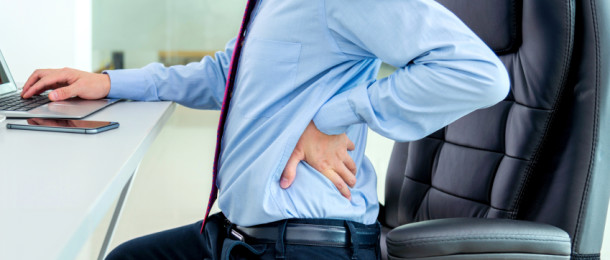
Given the data, it’s fair to say that to the majority of America’s working populace, sitting is somewhat of a natural state. US News notes that over 85 percent of American workers remain seated for their jobs, and PR Newswire discovered in a recent survey that the average American spends 13 hours a day sitting.
While it’s a natural resting state for nearly everyone in the Western world, WebMD shows that sitting that much – especially when paired with bad posture and a lack of exercise – is among the primary lifestyle culprits behind back pain.
While ridding yourself of that pain is not exactly a walk in the park, here are nine scientifically-proven ways to minimize back pain, strengthen your musculature, and avoid further damage caused by improper posture.
Remind Yourself to Sit Straight
As new evidence and research into bad posture and lower back pain comes to light, countless ways to develop a better posture at work have been developed. Any one of them can do you a world of good – consider installing an hourly reminder to tell you to keep your back straight.
Alternatively, certain devices have been developed to remind you not to slouch, such as the Lift featured on The Verge. Ergonomic chair designs, and even standing chairs, are also a viable option to minimize back pain at work.
Your Phone May Be Causing You Back Pain
The majority of us tend to face down and slouch when viewing our phones, and research shows that many Americans spend several hours a day looking at their mobile devices – 4.7 hours a day, as per Digital Trends.
A fix to this may involve cutting down on your phone time, utilizing a Bluetooth headset to communicate, or reminding yourself to hold your phone up as often as possible, resting your arm on a table or desk.
Remove the Chair
One of the more radical options to minimize back pain whilst building a stronger back is to, as much as possible, avoiding sitting in a chair. Instead, prepare a large cushion and sit on the floor, or sit on a sofa with your legs crossed.
A systematic literature review of several studies shows that sitting at work specifically does not equate to lower back pain. Instead, a common cause, as per the NIH, is an aging and sedentary body.
Avoiding the chair can help you unconsciously strengthen and stretch your posterior musculature. Mark Sisson at Mark’s Daily Apple makes note of this, offering alternatives such as cross-legged positions, and the Japanese seiza position, a simple kneeling posture that stacks the spine naturally.
Are You Getting Enough Magnesium?
Since muscle weakness is a common factor contributing to lower back pain, exercise is a common remedy. But a more obscure reason for muscle weakness could be a nutritional defect – specifically, a magnesium deficiency.
Minerals such as calcium and magnesium are necessary for the proper cell function within your muscles, serving a vital role in muscle contraction and relaxation as per an article in the Oxford Journals. If you yourself are experiencing back pain without rigorous exercise or injury, then you too may need to pick up a banana and eat more spinach.
Avoid Heels
When sitting, be sure to plant your feet firmly into the ground – dangling off a high chair or sitting in heels can cause unnecessary strain in your muscles and back, and lead to aggravated symptoms.
If you work in an office where removing your shoes would be inappropriate, consider heel-less dress shoes. The few inches you may lose in height will do your back good in the future.
Find Time to Stretch
A deep stretch doesn’t have to involve an entire yoga class – all you need to help your body loosen up is ten to fifteen minutes, right after waking up. Deep stretches are important here – just bending down to touch your toes and leaning back to stretch your belly isn’t enough. Coach Julie Rader at Breaking Muscle recommends a few simple stretches, such as:
- Supine Hamstring Stretch
- Knee Twist
- Thread the Needle
- Legs Up the Wall
The stretches target the hips and hamstrings, which greatly helps you support your lower back and tackle muscular imbalances caused by hours of sitting. Incorporate it with classics, like the Sphinx pose and Child’s pose, for an everyday back routine.
Exercise the Right Way
If you do exercise, then adding mild supportive exercises to your routine can help you avoid future injury. As per a report by Harvard Health Publications, avoid sit-ups, as these promote lower back pain. A good alternative are planks, which strengthen the entire core.
Furthermore, focus on stronger hip flexors and pelvic muscles, through squatting and lying leg raises. With squatting, you should definitely speak with a professional before continuing: partial squats, as per expert Nick English on The Huffington Post, are detrimental to the knees due to promoted muscular imbalance; but not everyone can perform deep squats.
Years of sitting and walking in heels changes the structure of a person. Even though every toddler is capable of easily resting in a squat, a middle-aged sedentary American may derive more injury than benefit from attempting a squat.
If you exercise heavily as a way to strengthen your back, it’s important to note that excessive strain without proper relaxation and stretching can cause your back muscles to fatigue throughout the day, leading to back spasms and pain. Remember to stretch properly after you exercise, to prevent muscle tightness.
Pick Up Swimming
The theory behind why swimming works well for patients with lower back issues is relatively simple: swimming alleviates the muscles of a lot of work necessary to keep the spine straight, due to the buoyancy the human body achieves in water.
Furthermore, breaststroke swimming helps strengthen the musculature to support your spine, as per the NY Times. That being said, as with other proposed exercise plans, consulting a professional beforehand is crucial to avoid aggravating an underlying disease or oncoming injury.
There’s Always Acupuncture
After initial skepticism, thorough research has shown that, while unproven and dubious, there’s no doubting the evidence that acupuncture does produce results in many patients. As per a meta-analysis on the subject, pure acupuncture may “have a favorable effect on self-reported pain”.
It’s currently impossible to verify the exact mechanisms for acupuncture due to the challenge of creating a viable placebo, but studies show that patients undergoing regular treatment feel better, experience less back pain, and are more relaxed.
Before you speak to a specialist about acupuncture or any other physical treatment, however, it’s wise to first consider your conventional treatment options, including muscle relaxants and acetaminophens for severe back pain. Consult your doctor before attempting any exercise, or an alternative treatment plan.
7 Tips to Help You Manage Chronic Back Pain
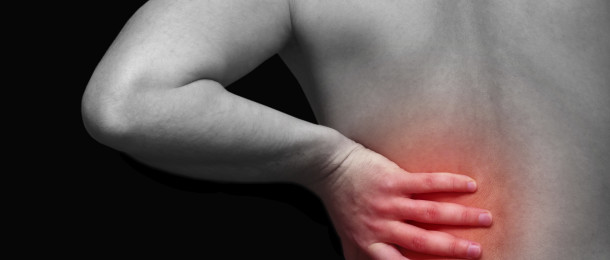
Are you burdened by chronic back pain? You are not alone, back pain is the second most common reason people visit the doctor in the US. If you have reported your pain to your doctor and told that you don’t have an acute injury and are just plagued with back pain that seems to have no cause, then there are easy ways to manage your back pain, so it stops interfering with you being able to lead a happy, productive life. Try one or more of these seven tips to help you manage your chronic back pain.
1. Replace That Stiff Mattress That May Be Making Your Chronic Back Pain Worse
One way that many chronic back pain sufferers unknowingly contribute to their own symptoms is by sleeping on an old mattress or the wrong type of mattress. Years ago, doctors recommended that sufferers of back pain sleep on very firm mattresses. Today, mattress recommendations have changed, and a survey conducted by Harvard Medical School actually revealed that people who slept on the firmest mattresses experienced the worst quality of sleep.
What is the best mattress for back pain? The answer actually varies from person to person. Only super-soft and super-firm mattresses should be avoided. To find the best mattress for you, visit a showroom on a day when your back pain is acting up and choose the mattress type that helps relieve this pain when you lie on it.
2. Choose the Right Computer Chair
Whether you sit at a computer desk all day long while at work or just spend a few hours in the evening browsing social media websites, sitting in the wrong chair can cause your back pain to worsen. Make sure the seat of your chair is cushioned and the back of their chair offers lumbar support.
3. Position Your Computer Properly
You also want to make sure that your computer is properly aligned with your line of vision to keep back pain away. If your computer is too low, then you may hunch your back as you look down at the screen.
Make sure that when you sit down at your computer, you can comfortably view the screen when looking straight ahead. If not, then adjust the height of your computer chair or purchase a new chair or computer desk that allows you to view the screen in a more comfortable fashion.
4. Make Heat Therapy a Habit
There are many easy ways to apply heat to your achy back, and you shouldn’t wait until your back pain is at its worst to do it. Heat relieves pain immediately by disrupting the nerve signals your back is sending to your brain that sense pain. However, it also increases blood flow to your back that aids in healing.
Try a heating pad on a “low” setting when you are at home and try the self-heating pads that you can stick onto your aching back when you are away from home.
5. Try TENS
TENS stands for transcutaneous electrical nerve stimulation, and this therapy has been proven to help relieve back pain. There are small, portable TENS units on the market today that you can use at home.
Similar to heat, the low-intensity electronic impulses the machine sends to your back interferes with the “message” your body is sending to your brain that tells it you are in pain. The mild electric current also causes your brain to produce endorphins, which are your body’s natural pain-killing hormones.
6. Hit the Spice Cabinet and Try Turmeric
If you have ever eaten an Indian curry dish, then you may have already tried turmeric and not even realized it. Turmeric has reached new popularity due to not only its taste, but also its great health benefits.
Turmeric has natural anti-inflammatory properties that make it very beneficial to anyone dealing with chronic pain,including back pain. Just mix 1/4 teaspoon into a small glass of milk or sprinkle it on a meal each day, and you may be surprised at how much pain relief it gives you.
7. Strike a Few Pain-Relieving Poses at a Local Yoga Studio
Strengthening your back muscles can help aid in pain relief as well as gentle stretching of them several times each week. You can help strengthen your muscles while stretching at the same time by performing yoga.
Overcoming Scoliosis
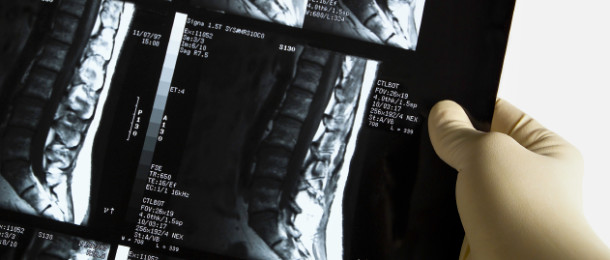
Although the upper spinal column has a degree of roundness and the lower portion of the spine appears to sway when viewed from the side, it should be a straight vertical line when observed from the rear. Scoliosis is a lateral, or sideways, curvature of your spine. The condition most often occurs during a growth spurt just before the onset of puberty. Although the cause of many cases of scoliosis is unknown, it can be the result of medical conditions like cerebral palsy and muscular dystrophy as well as physical trauma. The medical condition also tends to run in families. Girls have a higher risk of developing the condition.
What is Scoliosis?
Most cases are mild, but the disorder can worsen over time. Severe scoliosis can be debilitating. A severe curvature of the spine can reduce the amount of space within the chest cavity. As a result, the lungs may not function properly. The curvature may also cause balance problems due to uneven hips or uneven leg lengths. As the condition progresses, the spine may rotate or twist resulting in a protruding rib or shoulder blade.
Treatment Options
A doctor should closely monitor the individual to determine whether the curvature is worsening. While mild cases do not require treatment, complex curvatures of the spine may require physical therapy, chiropractic care or a brace. Particularly severe cases may require surgery. Adults with the disorder may experience chronic back pain. Physical therapy techniques have been developed to offset the side effects of scoliosis and help you to breathe better. Therapy can also improve the shape and appearance of your body chiropractic care may be effective in treating acute short-term pain.
In severe cases, wearing a brace is the recommended course of treatment to prevent further curvature of the spine. Contoured to conform to the patient’s body, the device fits underneath the arms and around the hips, lower back and rib cage. The close-fitting brace is worn underneath the clothing and typically does not interfere with daily activities. The brace should be worn day and night because the number of hours that it is worn increases its effectiveness. Children can remove the brace to participate in sports if required. Wearing the brace is discontinued after the spinal column stops growing.
While bracing can halt the progression of the curvature, it may only provide temporary correction of the condition. The scoliosis may assume its original magnitude or worsen when the brace is removed. If the curvature exceeds 45 degrees, the Scoliosis Research Society generally recommends surgery as the prescribed course of treatment. If the curve is allowed to exceed 70 degrees, the disorder distorts the individual’s normal posture.
Spinal fusion is the most common type of surgery. During the procedure, surgeons will connect two or more vertebrae together with pieces of bone or bone-like material. Metal rods, wires and screws are used to hold the spinal column in place until the vertebrae fuse together. In children, an adjustable rod is used. The rod will be lengthened every few months based on how fast the child is growing.
If you or your child are experiencing back pain or any of the other symptoms of scoliosis, you should schedule an appointment with a medical professional. Early diagnosis and treatment increases the chance of a more positive outcome.
If you are reading this on any other blog than Comprehensive Pain Management Center or via my RSS Feed, it is stolen content without credit. You can find us on Twitter via @CompPainMgmt. Come and visit our blog at http://www.compainmc.com/blog/.
Back Pain Relief Without Drugs or Surgery
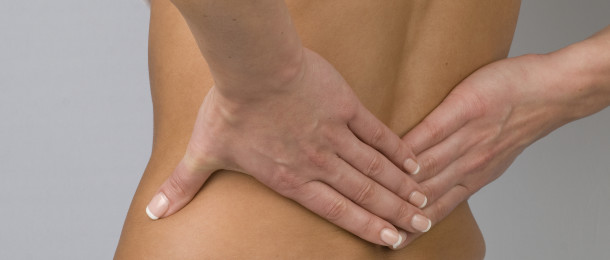
Millions of people in America suffer from some sort of back pain issue. Most of them seek out doctors who will suggest risky surgeries or prescribe dangerous medications to immediately alleviate the pain that their patients experience. An increasing number of physicians now inform patients about an effective, alternative healing mechanism that has been around for ages. That healing mechanism is the human body itself. Here are some of the top ways to activate the body’s healing properties and get back pain relief; side effects could include a lifetime of joy and well-being.
Eat Clean, Nutrient-Rich Foods
Plant-based foods have been acknowledged as powerful medicine since ancient times. These foods are normally full of nutrients that are easily absorbed by the body and are known to give back pain relief. These nutrients are needed to help the body function and heal itself. Since many back pain problems stem from chronic inflammation, back pain sufferers should focus on eating lots of fresh, raw produce and foods that have anti-inflammatory properties. Some foods that should take center stage in their diets are broccoli, turmeric, ginger, walnuts and blueberries. Foods that are known to trigger inflammatory reactions in the body are artificial ingredients, coffee, alcohol, refined sugars, meats, dairy products, eggs and grains.
Get Adequate Sleep
Sleep is an important aspect of the body’s healing process because it is the time when the body can fully repair strained or damaged muscles. Going to bed early and sleeping on firm surfaces facilitate better sleep. Also, the healing process during sleep is enhanced when the body does not have to concentrate on digestive processes or excretory functions.
Exercise Regularly
Moving around is likely the last thing that someone wants to do who is suffering from back pain, but exercise that is performed properly and regularly promotes healing. Back pain sufferers achieve the best results by consulting with physical therapists who can customize exercise regimes that accommodate specific ailments.
Obtain Proper Alignment
Chronic back pain may have its roots in poor posture or spine alignment. Licensed chiropractors effectively diagnose back pain issues and recommend non-invasive, alignment protocols that produce dramatic results. These doctors also recommend stretching and exercise techniques that strengthen back muscles and act as a defense against future back pain.
Indulge in Therapeutic Massage
Massage therapists who specialize in sports injury massage can target the right muscles and provide back pain relief. The protocols that are followed during injury massage therapy improve blood circulation within the body which brings more nutrients and oxygen to injured areas within the back. When injury massage therapy is performed regularly, it speeds the body’s overall healing processes.
Commit to Intermittent Fasting
While some areas in the world are experiencing famine, most Americans eat too much of the wrong foods regularly. This type of lifestyle leads to obesity and many degenerative diseases. The best way to stop this detrimental cycle is to remove junk foods from the diet. After establishing healthy eating habits, one should try fasting once or twice per week. The fasting period gives the body a break from digesting foods, and its energy is refocused on healing. While many celebrities are doing intermittent fasting for weight loss and anti-aging benefits, back pain sufferers are finding some relief from the practice as well.
Engage in Daily Prayer
The body is a temple that houses the spirit that came into existence through the Creator. When a person meditates on their Creator, their spirit is filled with light, peace and joy. That is the environment where optimal healing occurs within the spirit, soul and body.
These are only a couple of options for back pain relief. Talk to your doctor to learn about other relief options.
If you are reading this on any other blog than Comprehensive Pain Management Center or via my RSS Feed, it is stolen content without credit. You can find us on Twitter via @CompPainMgmt. Come and visit our blog at http://www.compainmc.com/blog/.
Herniated Disk: What It Is and How to Treat It
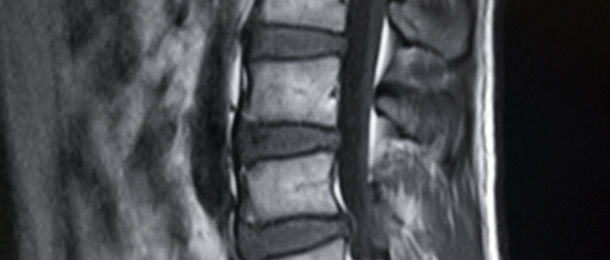
Most people have back pain at some point in their lives. Back pain is one of the most frequent reasons that people are absent from work or go to the doctor. Although it is possible for back to result from many conditions, a herniated disk is one of the more common causes.
What is a Herniated Disk?
Your spine consists of 26 bones. These bones are called vertebrae. In between the vertebrae are soft disks that are filled with a jelly-like material. The disks provide cushioning to the vertebrae. They also help keep them in place. Sometimes, disks degenerate or break down. When the disks weaken, they may rupture. This is known as a herniated disk. A herniated disk allows the jelly-like matter in the middle of the disk to leak out. This can irritate the nearby nerves, causing pain. In addition, it can place pressure on the spinal cord and cause numbness or weakness in a leg or arm. Some people experience no symptoms at all.
What Causes it?
Most of the time, herniated disks are caused by either age-related wear and tear. Over time, spinal disks become less flexible and more prone to rupturing. This is also known as degeneration. In other instances, herniation can be caused by a traumatic event, such as car accident or blow to the back.
How is it Diagnosed?
Your doctor can diagnose a herniated disk with a medical history and a physical exam most of the time. They may order other tests, as well. Here are the most common tests:
Nerve tests
Nerve conduction examinations and electromyograms assess how well electrical impulses move through the nerves. This can help identify if nerves are damaged.
Imaging tests
One of the following tests may be ordered if your physician suspects that another condition might be causing your symptoms or if he or she needs to see which nerves are affected.
- X-rays-Although normal X-rays cannot be used to determine if a disk is herniated, they can be used to determine if your back pain might be due to another cause.
- Computerized Tomography Scan-A CT scan refers to a series of X-rays taken from many different viewpoints. The images are then combined to create a cross-sectional view of the spinal column, as well as the structures surrounding it.
- Magnetic resonance imaging-Also known as an MRI. This test uses a magnetic field and radio waves to generate images of your tissues and organs. An MRI is often used to pinpoint where the herniated disk has occurred and to determine what nerves are involved.
What Treatments are Available?
The primary goal of treatment is to help the patient return to their normal level of activity and relieve pain and other symptoms that result from a herniated disk. Every patient’s treatment plan should be individualized depending on the source and severity of the pain and whether or not they are exhibiting any other symptoms. In most cases, patients start with a course of conservative care prior to considering surgical options. In rare cases, immediate surgical intervention may be needed to prevent more serious symptoms. Conservative treatments for a herniated disk may include:
- Exercise programs or physical therapy
- Massage therapy
- Acupuncture
- Cognitive behavioral therapy
- Bio Feedback
Other treatments for herniated disk include:
- Pain medications
- Epidural injections
- Spinal Surgery
Although disk herniation can be quite disabling, with proper treatment and care, most people completely recover. If you or your primary care physician suspects that you have a herniated disk, seek the advice of a pain management specialist. They can provide you with a range of treatment options to help you return to your previous level of activity.
If you are reading this on any other blog than Comprehensive Pain Management Center or via my RSS Feed, it is stolen content without credit. You can find us on Twitter via @CompPainMgmt. Come and visit our blog at http://www.compainmc.com/blog/.

